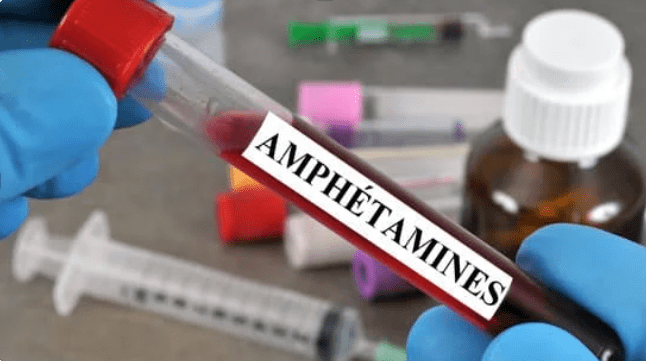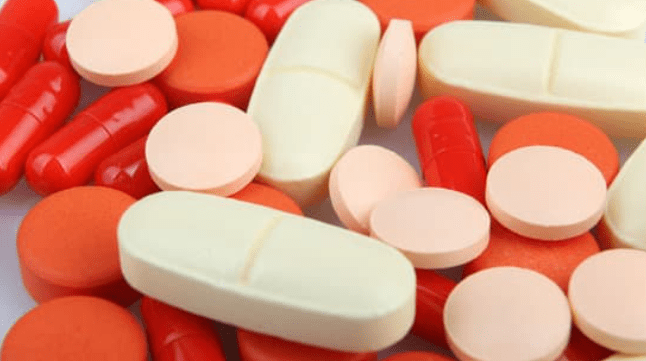
Amphetamine withdrawal creates a dangerous window where severe depression and suicidal thoughts can emerge within hours of stopping use.
The ASAM/AAAP clinical guidelines show that structured, professional support during this critical period significantly reduces relapse risk and prevents life-threatening complications.
This article explains the withdrawal timeline, symptoms to expect, and evidence-based treatments that can help you safely navigate recovery.
What is Amphetamine Withdrawal?
Amphetamine withdrawal occurs when someone who has developed neuroadaptation from sustained use of stimulants like methamphetamine, Adderall, or other amphetamine-type substances suddenly reduces or stops using. The brain, which has adapted to constant stimulation, experiences a catecholamine depletion that triggers predictable but potentially dangerous symptoms.
Unlike alcohol or benzodiazepine withdrawal, amphetamine withdrawal rarely causes life-threatening medical complications. However, the psychiatric symptoms can be severe enough to drive people back to drug use or, in worst cases, lead to suicide attempts.
The Two-Phase Withdrawal Pattern
Withdrawal doesn’t follow a single path but usually unfolds in two main stages:
Crash Phase (12-72 hours, up to 7 days)
The initial crash hits hard and fast. You might experience:
- Extreme fatigue and hypersomnia
- Intense irritability during waking periods
- Increased appetite and rapid weight gain
- Profound dysphoria and mood swings
- Psychomotor slowing
- Strong cravings that intensify as fatigue lifts
Post-Acute Phase (weeks to months)
After the crash subsides, longer-lasting symptoms emerge:
- Persistent depression and anhedonia
- Anxiety and sleep disturbances
- Low motivation and impaired concentration
- Recurring intense cravings
- Possible lingering paranoid thoughts or mild psychotic features
Amphetamine Withdrawal Symptoms You Should Never Ignore
The Cochrane review of amphetamine withdrawal studies consistently identifies several red-flag symptoms that require immediate professional attention:
Psychiatric Emergency Signs
- Suicidal thoughts or plans – Depression during withdrawal can be severe and sudden
- Psychotic symptoms – Paranoia, hallucinations, or delusions that persist beyond intoxication
- Severe agitation – Inability to calm down or episodes of aggressive behavior
- Complete inability to sleep – Insomnia lasting multiple days
Physical Warning Signs
- Extreme dehydration or inability to eat
- Chest pain or heart palpitations
- Severe headaches or neurological symptoms
- Signs of other substance withdrawal (if polysubstance use is involved)
The American Addiction Centers data shows that suicide risk peaks during the first week of withdrawal, making professional monitoring essential during this period.
Why Professional Amphetamine Withdrawal Treatment Works?
The difference between going it alone and seeking professional help lies in three critical factors:
Safety-First Approach
Professional withdrawal management follows SAFE-T suicide assessment protocols that systematically evaluate risk factors and implement protective interventions. This structured approach has proven effective at preventing self-harm during the vulnerable early withdrawal period.

Evidence-Based Symptom Management
While no medications are FDA-approved specifically for amphetamine withdrawal, clinical research supports targeted approaches:
- Sleep restoration: Addressing the severe sleep disruption that drives irritability and craving
- Nutritional support: The ASAM guidelines emphasize nutrition and food security as critical factors
- Symptom-specific medications: Short-term use of benzodiazepines for severe agitation or antipsychotics for psychotic symptoms when necessary
Rapid Transition to Long-Term Care
The most successful withdrawal programs immediately connect patients to contingency management and other evidence-based treatments for stimulant use disorder, preventing the common pattern of repeated withdrawal attempts.
Current Amphetamine Withdrawal Treatment Options
Managing withdrawal effectively depends on a blend of clinical strategies and supportive measures:
Supportive Care Foundation
All effective withdrawal treatment starts with basic supportive measures:
- Calm, low-stimulation environment
- Sleep hygiene and circadian rhythm restoration
- Hydration and nutritional rehabilitation
- Daily psychiatric monitoring with structured risk assessment
Medication Considerations
Research shows mixed results for withdrawal-specific medications:
Limited Evidence Supports:
- Mirtazapine for sleep and mood symptoms in some studies
- Short-term benzodiazepines for severe agitation in supervised settings
- Antipsychotics when psychotic symptoms persist
Not Recommended for Routine Use:
- Modafinil showed no significant benefit in controlled trials
- Bupropion may help certain subgroups but is not a withdrawal treatment
- Stimulant replacement therapy remains experimental and risky outside research settings
Contingency Management: The Gold Standard
SAMHSA’s 2025 policy changes now allow up to $750 per patient per year for contingency management incentives, making this evidence-based approach more widely available. Contingency management provides immediate, tangible rewards for verified abstinence and treatment participation.
Special Considerations for Different Populations
Withdrawal experiences aren’t the same for everyone, they can vary widely depending on personal history and health factors:
Prescribed Amphetamine Users
People discontinuing prescribed Adderall or similar medications face unique challenges. Clinical guidance recommends gradual tapering under medical supervision rather than abrupt cessation, especially for those with underlying ADHD who may need alternative treatments.

Co-occurring Mental Health Conditions
The TIP 50 guidelines emphasize that people with depression, anxiety, or trauma histories require integrated care that addresses both withdrawal symptoms and underlying psychiatric conditions simultaneously.
Polysubstance Use
When amphetamine withdrawal occurs alongside opioid or alcohol dependence, medical complexity increases significantly. Digital contingency management programs are showing promise for people with multiple substance use disorders.
A Step-by-Step Recovery Timeline
The path through amphetamine withdrawal and recovery is best understood as a series of key stages:
Days 0-1: Crisis Stabilization
- Comprehensive risk assessment using validated tools
- Medical evaluation for complications
- Safe environment with 24/7 monitoring if needed
- Begin psychoeducation about the withdrawal process
Days 1-7: Acute Symptom Management
- Daily suicide risk screening and safety planning
- Sleep and nutrition support
- Symptom-targeted medications only when necessary
- Preparation for longer-term treatment engagement
Week 2 and Beyond: Recovery Foundation
- Enrollment in contingency management program
- Integration of cognitive-behavioral therapy
- Family involvement and social support activation
- Ongoing psychiatric care for co-occurring conditions
Why Going It Alone is Dangerous?
Facing amphetamine withdrawal alone can intensify symptoms, heighten risks, and greatly reduce the chances of lasting recovery:
The Relapse Trap
Research consistently shows that the combination of severe dysphoria and intense cravings during withdrawal creates an almost irresistible urge to use stimulants again. The temporary relief from using reinforces the cycle and makes future quit attempts even more difficult.
Hidden Medical Risks
While amphetamine withdrawal isn’t typically life-threatening, complications can arise:
- Severe dehydration from poor self-care
- Dangerous behaviors during psychotic episodes
- Accidents due to extreme fatigue or poor judgment
- Suicide attempts during severe depression
Missed Treatment Opportunities
The withdrawal period represents a critical window when people are often most motivated to change. Without professional support, this motivation frequently dissipates as acute symptoms resolve, leading to missed opportunities for lasting recovery.
Building Your Support Network
Successful amphetamine withdrawal treatment requires a coordinated team approach:
- Medical professionals trained in addiction medicine
- Mental health counselors experienced with stimulant use disorders
- Peer support specialists who understand the recovery process
- Family members educated about withdrawal and recovery
- Case managers who can coordinate care and remove barriers
The APA endorsement of expanded contingency management funding recognizes that evidence-based addiction treatment requires sustained, coordinated effort rather than isolated interventions.
Looking Forward: Recovery is Possible
While amphetamine withdrawal presents serious challenges, current evidence supports optimism about recovery outcomes when proper treatment is provided. The key is recognizing that withdrawal is just the first step in a longer process that requires ongoing support, evidence-based interventions, and patience with the brain’s natural healing timeline.
Professional treatment programs now combine the safety of medical supervision with the proven effectiveness of behavioral interventions like contingency management. This integrated approach addresses both the immediate dangers of withdrawal and the long-term goal of sustained recovery.
Remember that seeking help during amphetamine withdrawal isn’t a sign of weakness—it’s a smart, evidence-based decision that dramatically improves your chances of successful, lasting recovery. The combination of professional medical support and proven behavioral treatments gives you the best possible foundation for reclaiming your life from addiction.
If you’re ready to break free from the cycle of amphetamine use and withdrawal, don’t face this challenge alone. Contact MARR Addiction Treatment centre and get the structured support and evidence-based care you need for lasting recovery.
